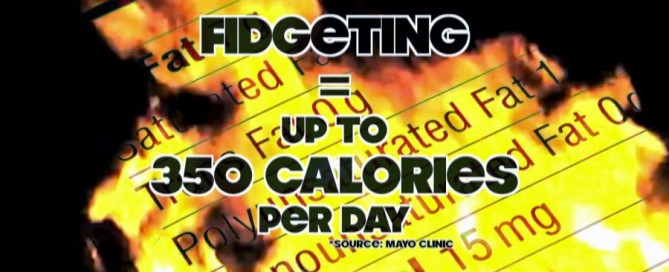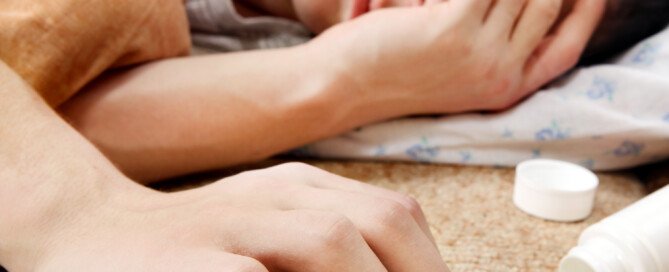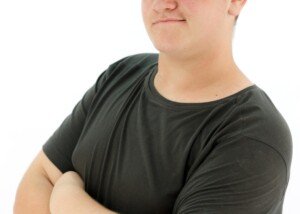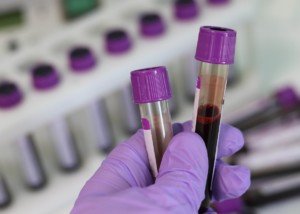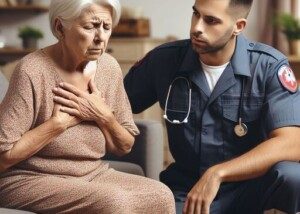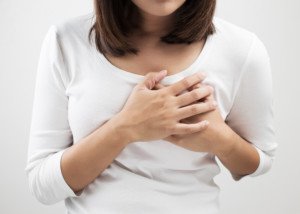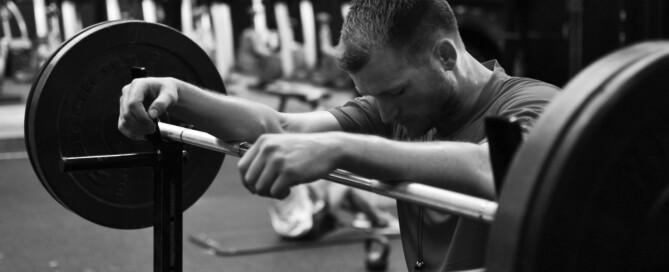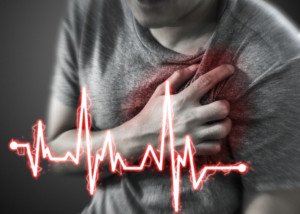Child Says Fidgeting Burns Calories Years Before Research
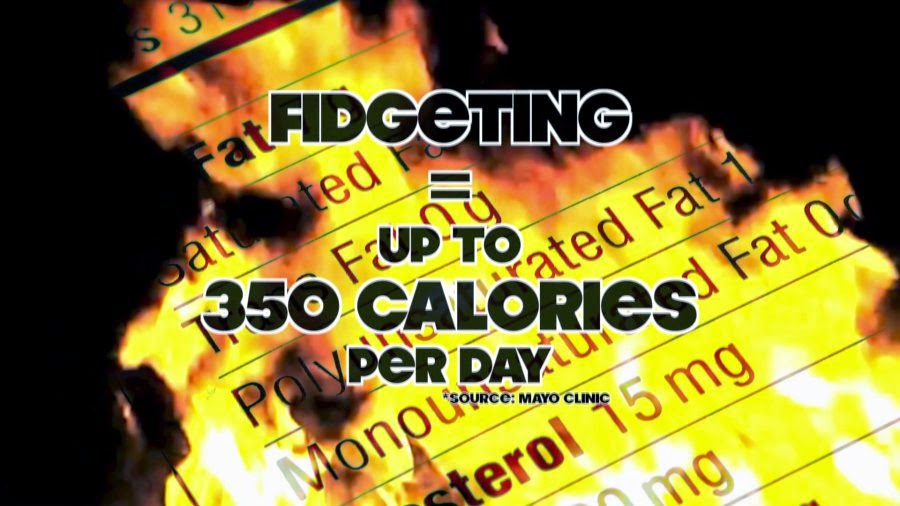
A teacher blew off a 13-year-old’s proposition that fidgeting burns calories, which, many years later, was proven by research to be true.
When I was 13, I was a freshman at a Catholic high school. There was a nun, Sister Jeane Francis.
She one day commented that I had a tendency to fidget while seated in her class. The fidgeting consisted of moving a crossed leg up and down repeatedly, or just repeatedly flexing my foot—that is, lifting the heel off the floor repeatedly.
The fact that this nun couldn’t think of anything more earth-shaking to comment about, speaks volumes about her character.
I told her that fidgeting burns calories.
She thought this was ridiculous. I think she then asked why I thought that fidgeting burns calories.
I explained that even though the movement was small, it had a cumulative effect; over time, all that fidgeting would add up to a good number of calories burned.
Sister Jeane Francis thought this was absurd. I don’t remember the words she used, but I DO remember the impression she left on me:
That the idea that fidgeting can burn enough calories over time to affect body weight was absolutely stupid.
Not in my wildest dreams could I ever have predicted that MANY years later, a study would come out, showing that the amount of calories burned from fidgeting was, over time, remarkable.
That study was like a snowball rolling down a hill; more studies suddenly popped up — with the same results: Fidgeting burns calories, and lean people tend to fidget more.
Some of the Studies
- Mayo Clinic (Levine et al)
- School of Kinesiology and Health Studies (McGuire et al)
- National Institutes of Health in Phoenix, Arizona (Ravussin et al)
In fact, so compelling was all this research that at least one book was written on how to lose weight by fidgeting.
And by the way, the cumulative effect has been identified as up to several hundred calories PER DAY. Since there are 3,500 calories in one pound of fat, let’s do some simple math:
Let’s suppose fidgeting consumes 300 calories a day. Now, 300 x 365 days per year = 109,500 calories per year.
Divide by 3,500 to see how many pounds of fat that is: 31 pounds! If this sounds too incredulous to believe, read the studies.
Not only that, but fitness experts typically agree that fidgeting throughout the day will burn hundreds of calories that you would not burn if you “sat tight and still” like some teachers order their students to.
Of course, if the family is playing Scrabble and one of the kids can’t stop fidgeting, it can be annoying.
The person sitting behind you on an airplane, who can’t keep their legs still, will annoy you by “kicking” your chair. Yes, fidgeting can be very annoying to those nearby.
HOWEVER…this doesn’t change the fact that it burns enough calories in one year to either cause weight loss in those who take up fidgeting, or, prevent weight GAIN in those who’ve done it all along.
And that was my point with Sister Jeane Francis…and this biology teacher, who thought she knew everything, turned out to be clueless, while I, at age 13, was ahead of my time.
FIDGETING BURNS CALORIES
As a 13-year-old, and at no point after that, I never told anyone else about my theory that fidgeting contributes to calorie burning. What really riles me, however, is that the biology teacher thought this was poppycock.
I wonder if she lived long enough to become aware of the studies and mounting media support of this newly discovered accessory to a weight loss program.
Another point that must be made is the sorry fact that many teachers—and parents—are quick to dismiss ideas simply because they come from kids.
Usually, kids haven’t lived long enough to feel suppressed by expectations and pressure to blend into the herd mentality.
Kids tend to be more free-spirited than adults, less inhibited with expressing their thoughts, more inclined to think outside the box.
But over time, if they’re around the wrong people, they WILL become silenced. Hopefully, such kids will one day rediscover the power of bold expression and embrace it.
Meanwhile, keep moving those feet, twirling the hair and tapping the pencil—as long as your fidgeting isn’t getting on the nerves of the person sitting next to you.
The Studies
- Mayo Clinic
- School of Kinesiology and Health Studies
- National Institutes of Health in Phoenix, Arizona
 Lorra Garrick is a former personal trainer certified through the American Council on Exercise. At Bally Total Fitness she trained women and men of all ages for fat loss, muscle building, fitness and improved health.
Lorra Garrick is a former personal trainer certified through the American Council on Exercise. At Bally Total Fitness she trained women and men of all ages for fat loss, muscle building, fitness and improved health.
Why a Bullied Child’s Suicide May Be Rational vs. Mental Illness
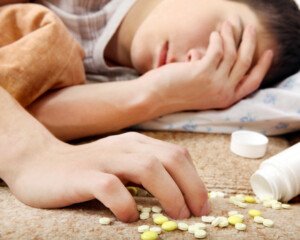
Perhaps the bullied teen or adolescent who dies by suicide was thinking rationally rather than suffering from clinical depression or mental illness.
When yet another story breaks of a child who dies by suicide as a result of bullying, many people attribute this to a mental illness, namely depression, and the event spurs a lot of discussion about the stigma of mental illness — a stigma that keeps the depressed victim from seeking counseling.
But is it really a hallmark of mental illness when a young person sees suicide as the only escape from the bullies who make her feel worthless and defective?
This isn’t about “getting” a thicker skin or being overly sensitive.
Humans—the very social, emotionally needy creatures we are—by nature respond in a predictable way to emotional abuse and social rejection.
We see the parents of bullied kids who died by suicide communicating to the media. We see what appear to be wonderful parents.
But like the man who batters his wife several times a week behind closed doors, but then in public presents himself as the perfect husband, is it even remotely possible that many bullied kids (who die by suicide or attempt it) had abusive parents?
And when I say “abusive,” I don’t necessarily mean physically or sexually. Remember, words can strike a developing mind with the impact of a hot brick on flesh.
This is evident in the flood of comments that pop up when the teen bully suicide story makes it to a major news outlet.

Shutterstock/Milles Studio
You’ll find plenty of posts by adults who were bullied at school and had zero sanctuary at home.
Namely, they faced humiliation and scoldings from parents who blamed them for the bullying.
The posts are deeply disturbing, telling of the emotional abuse that these posters suffered at the hands of their parents, creating in them an internal fragility that the bullies at school feasted upon.
School ends late in the afternoon, but going home is the second and third shift of bullying. The situation is inescapable. Suicide becomes inviting. Mental illness or logical thinking?
When bullied kids see suicide as a solution, this isn’t the same kind of “crazy” thinking that, for instance, went on in the case of the Heaven’s Gate cult, in which the 39 brainwashed participants ended their lives because they believed suicide would take them to a space ship following a comet.
With parents who demean and dis-empower their kids, crushing any dreams in life they may have, these kids feel hopeless despair and see suicide as the only way out.
Hardly seems like “mental illness.” It almost makes a lot of sense. Again, read those posts of the former bully victims who grew up, which are found on any big article about this topic. The posts are chilling.
It’s a lot easier to blame mental illness as the driving force to youth suicide, and perhaps this IS the case when the teenager who takes his life actually had everything going for him: lots of friends, great parents, popular at school, athletic and talented.
But suppose a teen, let’s call him Greg, faces ongoing belittling by his booming father and popular “mean boy” older brother. By the time Greg reaches high school he feels disgusting on the inside.
He has great dreams but believes he’s not good enough to succeed (thanks to relentless discouragement from his father and brother—while Mum remains emotionally weak on the sidelines).
Greg is naturally introverted and awkward, so this makes him get picked on by teachers who favor more engaging, extroverted students.
Kids make fun of him daily and nobody wants him at their lunch table, so he eats lunch sitting on a toilet in the restroom because it’s too humiliating to be seen eating alone in the cafeteria.
Greg feels like a total loser and knows he’ll be saddled with lifelong psychological baggage. Would it really be a sign of mental illness or wayward brain chemistry that Greg would one day take his life?
Izzy Kalman, author of Bullies to Buddies: How to turn your enemies into friends, concurs.
Dr. Kalman believes that the same anti-bullying organizations, that work hard to raise awareness that the horrible effects of bullying can lead to suicide, still have trouble accepting that bullying is responsible, and that there must have been an underlying depression.
Yes, it is so hard to accept that suicide can be seen as the only solution by a rational person who is suffering abuse at the hands of others.
 Dr. Kalman is a psychotherapist in private practice and has treated many victims of bullying for over 20 years. He has published extensively on solutions to bullying.
Dr. Kalman is a psychotherapist in private practice and has treated many victims of bullying for over 20 years. He has published extensively on solutions to bullying.
 Lorra Garrick has been covering medical, fitness and cybersecurity topics for many years, having written thousands of articles for print magazines and websites, including as a ghostwriter. She’s also a former ACE-certified personal trainer.
Lorra Garrick has been covering medical, fitness and cybersecurity topics for many years, having written thousands of articles for print magazines and websites, including as a ghostwriter. She’s also a former ACE-certified personal trainer.
.
Top image: Shutterstock/Sabphoto.
Source: wikipedia.org/wiki/Heaven%27s_Gate_%28religious_group%29 Why a Bullied Child’s Suicide May Be Rational
Child Bullying Younger Sibling: How Mom Should NEVER Respond

Find out what parents should never do in response to a child bullying a younger sibling; the way the parents respond in an attempt to “fix” the problem can make the situation far worse.
This article actually also applies to dads, but it’s usually the moms who catch a child in the act of bullying a younger sibling.
Has a child of yours been picking on, harassing or bullying a younger sibling for what seems like months on end, maybe even years?
This is a tip-off that whatever tactics you’re employing, in an attempt to end this problem, aren’t working.
Oddly, most mothers and fathers will continue using the same approach, even though it fails miserably; instead of detouring and trying a new tactic, they stick with the old, useless one — perhaps because straying from it would mean straying from a comfort zone.
But you know that famous saying: Insanity is doing the same thing over and over yet expecting a different outcome.
Don’t be insane!
What should mothers NEVER do in response to a child bullying a younger sibling?
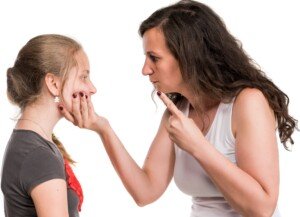
Shutterstock/Volodymyr Baleha
First, never put your best interests ahead of the bully’s and the victim’s. Next, never base your response or reaction on how easy it is for you to do.
In other words, it’s rather easy for a mother to blow up at the instigator and unleash a diatribe of criticism to that older child, slinging hurtful comments and all.
Yes, it’s actually quite easy to react this way because it requires no planning, creative problem solving, patience, rationale or logic. It’s pure raw, primal emotion.
And it will backfire, because when a parent reacts this way to the bully of the younger sibling … she (or dad) is exhibiting the very behavior that they’re denouncing!
A reaction of disgust and anger does NOT teach or show the bully how to love and respect the younger sibling.
Chastising with, “You’re older! You should know better!” will not cultivate love for the younger sister or brother.
Instead, it shows the instigator your anger. Well gee…if the older child feels compelled to belittle and invalidate the younger…how is a display of your anger going to stop that?
A threat of punishment won’t work. Again, this tactic won’t address the root cause. It won’t magically make the instigator feel kindness towards the victim.
Ask yourself how on earth your fury and threats will make the bully feel warm and fuzzy towards the victim.
Secondly, the threat of punishment will only make the bully try harder not to get caught the next time, or to develop an ingenious way of getting away with the “crime.”
This reminds me of the 11-year-old boy who drank a glass of chocolate milk after being told by his mother not to (the mother didn’t like her kids filling up on sugary items).
The 11-year-old knew he’d get in big trouble for this. The knowledge of his mother’s anger, however, did not stop him from disobeying a rule.
How many times have you heard kids say things like, “If my mom found out I (fill in the blank), she’d kill me.” Or, “If my dad finds out I (fill in the blank), I’ll be ground meat.”
The threat of punishment will only produce a more clever child — as was the case of the 11-year-old boy.
Someway, somehow, this nasty adolescent manipulated his nine-year-old brother (whom he regularly bullied psychologically) into admitting that HE had drank the chocolate milk (the mother discovered the chocolate-smeared glass in the kitchen).
The younger sibling ended up taking a lot of heat from the mother.
So you see, threat of punishment or knowledge of what the parent will do, will not stop sibling bullying. It will only make the perpetrator more cunning.
Other Responses to Sibling Bullying that will Fail
Don’t go into rants about how the siblings are “blood sisters” or “he shares your flesh and blood,” etc.
One woman would go into the same furious spiel every time she caught her two young sons “going at it.”
She’d fume: “You two both come from the same womb! You make me so ashamed!”
One day I said to her, “Do you really think they care they came from the same womb? Can they even remember being in there?”
Her only defense was pointing out that (at the time) I didn’t have any kids, so what did I know?
Yet if she had all the answers because she was the parent, why then, after years of this same angry spiel, were her boys still continuing to fight?!
Her words struck like a fist and did nothing to make these boys love each other. As adults, they are estranged from each other.
Another Thought on Sibling Bullying
“When the parents get in the middle trying to determine who are the real bully and the real victim, the kids start fighting over the parents,” says Israel (Izzy) Kalman, MS, a nationally certified school psychologist; director of Bullies to Buddies: and author of numerous books and publications about bullying and relationship problems.
“They each try to convince the parent to take their side against the other.
“This process intensifies hostilities between the kids, and whoever lost the parents’ judgment is mad not only at their sibling but at their parent as well.
“They continue to create fights over nonsense in order to get the parents to take their side, and the parents unwittingly establish a never-ending state of war.
“Ironically, kids learn to get along best when we refuse to get involved in their fights. Humans are social creatures and are hardwired to learn to get along.”
Sometimes it’s helpful for parents to get involved in a sibling bullying scene, continues Kalman.
“But our role should be to teach them how to solve their problems with each other, not to try to solve the problems for them.
“There is a free manual on my website that explains in great detail how parents (and teachers as well) unwittingly cause their kids’ fighting to escalate, and how to dramatically reduce the fighting with little effort: A Revolutionary Guide to Reducing Aggression Between Children.”
 Dr. Kalman is a psychotherapist in private practice and has treated many victims of bullying for over 20 years. He has published extensively on solutions to bullying.
Dr. Kalman is a psychotherapist in private practice and has treated many victims of bullying for over 20 years. He has published extensively on solutions to bullying.
 Lorra Garrick has been covering medical, fitness and cybersecurity topics for many years, having written thousands of articles for print magazines and websites, including as a ghostwriter. She’s also a former ACE-certified personal trainer.
Lorra Garrick has been covering medical, fitness and cybersecurity topics for many years, having written thousands of articles for print magazines and websites, including as a ghostwriter. She’s also a former ACE-certified personal trainer.
.
Top image: Shutterstock/VCoscaron
Why Isn’t Corus CAD Test Done on All ER Chest Pain Patients?

Since the Corus CAD blood test can determine if chest pain is being caused by clogged arteries, why aren’t all patients with chest pain in the emergency room given this test?
Wouldn’t that more efficiently eliminate needless imaging tests that use radiation?
Why isn’t this test a standard protocol in emergency rooms for people presenting with chest pain and other symptoms that are often caused by obstructive coronary artery disease (CAD) such as shortness of breath?
“In clinical trials, patients with acute chest pain suggestive of a heart attack (acute myocardial infarction) were excluded from the studies,” says David N. Smith, MD, a board certified cardiologist with Premier Cardiovascular Care and Wellness in SC.
“The Corus® CAD test is not indicated for patients experiencing a heart attack, as they need to be evaluated and treated quickly in the ER.
“The Corus® CAD test has been established for use in ‘stable’ patients with non-acute signs and symptoms suggestive of obstructive CAD.
“Additionally, the turnaround time for test results is 48 to 72 hours. This timeframe is not feasible for a quick emergency room diagnosis.”
In the ER, a person with chest pain receives a blood test to measure the amount of troponin in their blood.
Troponin is a protein-enzyme that leaks into the bloodstream when heart tissue is damaged. The result of this blood test can be ready in about 15 minutes.
Often, a second such test is necessary, since the first test result might not be definitive for a heart attack.
However, the second test is usually given about four hours later, which by then a diagnosis for sure can be made, as troponin levels continue rising after a heart attack.

Dr. Smith is a published author, national lecturer and Yale-trained physician-scientist certified by the American Board of Internal Medicine in Cardiovascular Disease. From his basic science background combined with advanced clinical research training at the Columbia Mailman School of Public Health, he brings an integrated holistic approach to cardiovascular medicine.
 Lorra Garrick has been covering medical, fitness and cybersecurity topics for many years, having written thousands of articles for print magazines and websites, including as a ghostwriter. She’s also a former ACE-certified personal trainer.
Lorra Garrick has been covering medical, fitness and cybersecurity topics for many years, having written thousands of articles for print magazines and websites, including as a ghostwriter. She’s also a former ACE-certified personal trainer.
.
Top image: Shutterstock/igorstevanovic
More information .on the Corus CAD test: cardiodx.com/corus-cad/product-overview
Chest Pain: Blood Test Can Tell if It’s Clogged Arteries

This blood test uses age, sex and gene expression measurements to safely & quickly determine whose chest pain is the result of obstructive coronary artery disease (clogged arteries).
Certain patients are candidates for this blood test, called the Corus CAD (coronary artery disease).
They are: not diabetic; have not been diagnosed with a previous heart attack; are not suspected of having a heart attack at the moment; have not had coronary artery bypass surgery; are not currently taking chemotherapeutic drugs, immune-suppressing drugs or steroid prescription drugs.
Chest pain is a very common symptom of obstructive heart disease, the so-called clogged arteries.
Another typical symptom is shortness of breath. The Corus CAD blood test results are available in 72 hours and can be done in a doctor’s office.
Why isn’t the Corus CAD test recommended for the general population of non-diabetics who experience chest pain?
Being it’s a simple blood draw, why not just give it to everyone as part of their physical as well?
“The Corus® CAD test is not a screening test, so it should not be used in the general population, but should be focused only in those patients with specific signs and symptoms suggestive of obstructive coronary artery disease,” explains David N. Smith, MD, a board certified cardiologist with Premier Cardiovascular Care and Wellness in SC.
“The diagnostic accuracy of this test has proven it is an exclusionary test that truly outperforms current noninvasive diagnostic testing such as nuclear stress test for helping rule out obstructive CAD in patients.
“In symptomatic patients with scores 15 or lower, this test accurately rules out obstructive coronary artery disease in a greater proportion of people than any other current test, thus potentially saving patients with low scores from having to undergo unnecessary invasive procedures such as a cardiac catheterization.
“A ‘non-low score,’ defined as greater than 15, corresponds to a higher likelihood of obstructive CAD.
“But since the test was not designed to be a ‘rule-in’ test, it should not be used to rule in patients for obstructive coronary artery disease.”
Other notable causes of chest pain are acid reflux, esophageal spasm and musculoskeletal issues (namely, a muscle spasm or inflammation of the cartilage near the sternum—the chest pain can be significant).

Dr. Smith is a published author, national lecturer and Yale-trained physician-scientist certified by the American Board of Internal Medicine in Cardiovascular Disease. From his basic science background combined with advanced clinical research training at the Columbia Mailman School of Public Health, he brings an integrated holistic approach to cardiovascular medicine.
 Lorra Garrick has been covering medical, fitness and cybersecurity topics for many years, having written thousands of articles for print magazines and websites, including as a ghostwriter. She’s also a former ACE-certified personal trainer.
Lorra Garrick has been covering medical, fitness and cybersecurity topics for many years, having written thousands of articles for print magazines and websites, including as a ghostwriter. She’s also a former ACE-certified personal trainer.
.
Top image: Shutterstock/Korawat photo shoot
Source: cardiodx.com/corus-cad/product-overview
PVCs: Frequency Per Minute, Hour, Day, Dangers
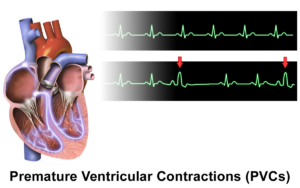
This is all about premature ventricular contractions (PVCs) as far as frequency and what REALLY matters as far as if they mean harm.
At my mother’s pacemaker evaluation, it was determined that over the preceding six months (the pacemaker keeps a record), she’d had five-thousand and something PVCs.
The pacemaker nurse told her this information with the same level as nonchalance as if she stated, “In the past six months I’ve seen a thousand patients.”
Is there a point, a cut-off value, after which the number of PVCs in one day should be of concern?
PVCs “recur throughout life; I think most people probably get them regardless of whether they are recognized,” says cardiologist David N. Smith, MD, a board certified cardiologist with Premier Cardiovascular Care and Wellness in SC.
“There is no specific cut-off. There are no specific numbers of PVCs that would alert someone to risk of danger.
“However, if PVCs were recurrent significantly or incessantly, particularly if they made one feel lightheaded or nearly passing out, a doctor’s advice should be sought. Medication may be suggested.”
Is there a correlation between number of PVCs per day (as confirmed with a monitor) and whether or not they mean something dangerous?
“The number PVCs do not implicate more or less danger or risk,” says Dr. Smith.
“However, incessant PVCs over years may lead to concerns about a weakening heart function. If the PVCs were ongoing for years and exercise tolerance is also bundling, consider a cardiology evaluation.”
Is the total per day or hour of premature ventricular contractions not relevant?
“The number PVCs per day is not, by themselves, risky,” says Dr. Smith. “The sensation of PVCs are the bigger concern.”
This so-called cardiac awareness can be troubling for many people, and it’s why they seek medical attention.
Cardiac awareness can be very distracting, not to mention frightening.
Treatment is designed to minimize this awareness or discomfort. However, says Dr. Smith, “This does not implicate a life threat.”
What’s meant by “frequent PVCs”?
“Having a PVC or 2/min is relatively infrequent or occasional. More than that we would consider frequent. If these occur, they typically can last days at a time.”
Premature ventricular contractions are NOT a risk factor for heart attack.
Reducing Heart Attack Risk
Lose Excess Body Fat
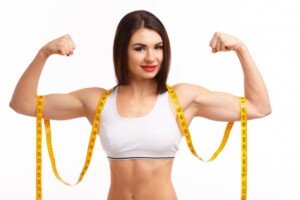
Freepic/lyashenko
Avoid Trans Fats
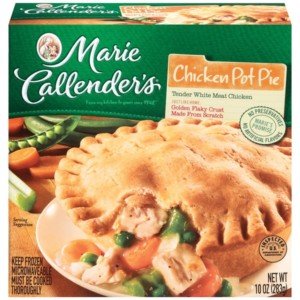
Watch Sodium Intake
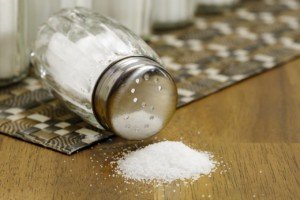
Restrict Processed Foods
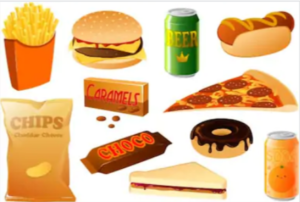
Shutterstock/Altagracia Art
Don’t Smoke

©Lorra Garrick
Control Blood Pressure

Freepik.com
Use a Treadmill Desk to Reduce Daily Sitting Time
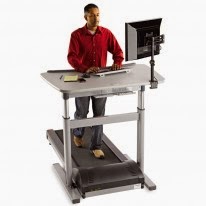
Practice Good Sleep Habits

Freepik/gpointstudio
Do Intense Strength Training

Shutterstock/Monkey Business Images
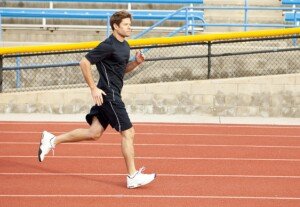
Shutterstock/ Phase4Studios

Dr. Smith is a published author, national lecturer and Yale-trained physician-scientist certified by the American Board of Internal Medicine in Cardiovascular Disease. From his basic science background combined with advanced clinical research training at the Columbia Mailman School of Public Health, he brings an integrated holistic approach to cardiovascular medicine.
 Lorra Garrick has been covering medical, fitness and cybersecurity topics for many years, having written thousands of articles for print magazines and websites, including as a ghostwriter. She’s also a former ACE-certified personal trainer.
Lorra Garrick has been covering medical, fitness and cybersecurity topics for many years, having written thousands of articles for print magazines and websites, including as a ghostwriter. She’s also a former ACE-certified personal trainer.
.
Top image: BruceBlaus/CreativeCommons
Irregular Heartbeat vs. Twitching Muscle in Chest: Comparison
PVCs for Two Minutes Straight: Does this Mean Heart Problem?
Premature Ventricular Contractions after Pregnancy, During Exercise

Did you recently have a baby, have resumed your exercise routine, but are now experiencing frightening PVCs?
A PVC is a premature ventricular contraction that makes it feel as though your heart is either skipping a beat or adding an extra beat in between beats.
In a PVC, the heart’s ventricles contract earlier than usual.
PVCs are often felt as a fluttering or pounding in the chest.
They can occur in people with or without heart disease and are usually benign, especially if infrequent.
But what about new-onset PVCs during exercise, after a pregnancy?
Cause of PVCs During Exercise Soon After Giving Birth
“The PVCs and women getting back in exercise after having a baby may reflect hormone changes,” says cardiologist David N. Smith, MD, a board certified cardiologist with Premier Cardiovascular Care and Wellness in SC.
“There is some evidence that suggests fluctuations in estrogen may alter the heart’s underlying rhythms; however, the fluid shifts that occur after delivery as well as the relative deconditioning may better explain premature ventricular contractions.”
For optimal health and fitness, a woman should make exercise a part of her life; there’s never a perfect time to begin a fitness regimen. Just do it.
Don’t wait till you lose weight to work out, and that includes strength training.
A lean body is NOT a requirement for pressing dumbbells and lifting kettlebells, nor is it a requirement for doing aerobic activities.

PexelsMart Production
Consult with your OBGYN for exercise guidelines during the postpartum period.
But keep in mind that pregnant women can exercise, but should be guided by their OBGYN.
Housework and taking care of babies and kids should never count as exercise — whether a woman is expecting or not.
One reason for this is because housework and caring for babies often come with a component of stress and/or anxiety.
Furthermore, housework and caring for babies comes with favoring the less dominant side of the body.
This can cause muscle imbalances and strained muscles.
But structured, methodical exercise can easily be done equally to both sides of the body, and this bilateral nature helps reset or prevent any imbalances from non-structured physical activity.
Exercise should be done with focus, good form and proper breathing.
For example, kettlebell swings will do so much more for the human body than will pushing a vacuum cleaner, and won’t come with the stress of “Oh, this dirty house!”

Shutterstock/The Faces
Greater fitness can mean a stronger, more efficient heart, which can reduce the frequency and impact of premature ventricular contractions.
Regular exercise strengthens the heart muscle and improves overall cardiovascular health, which can help blunt worries about irregular heartbeats.
Even if you’ve recently given birth, maintaining a fitness routine — once cleared by your physician — can support heart health and potentially lessen the occurrence of PVCs.

Dr. Smith is a published author, national lecturer and Yale-trained physician-scientist certified by the American Board of Internal Medicine in Cardiovascular Disease. From his basic science background combined with advanced clinical research training at the Columbia Mailman School of Public Health, he brings an integrated holistic approach to cardiovascular medicine.
 Lorra Garrick has been covering medical, fitness and cybersecurity topics for many years, having written thousands of articles for print magazines and websites, including as a ghostwriter. She’s also a former ACE-certified personal trainer.
Lorra Garrick has been covering medical, fitness and cybersecurity topics for many years, having written thousands of articles for print magazines and websites, including as a ghostwriter. She’s also a former ACE-certified personal trainer.
PVCs After Exercise: How Soon After Do They Count?
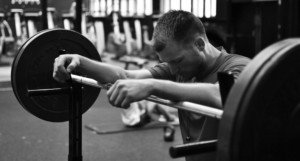
A cardiologist explains PVCs (premature ventricular contractions) that occur after exercise: how soon after do these matter; is there a cut-off point?
If someone has PVCs in the minute after stopping the exercise but not beyond a minute, does this count as “PVCs after exercise”?
“Yes, it does count as a PVC after exercise,” says cardiologist David N. Smith, MD, a board certified cardiologist with Premier Cardiovascular Care and Wellness in SC.
“But it does not necessarily imply significant risk without incessant or repeated runs, drop in blood pressure, passing out or having a significantly compromised heart.”
I’ve noticed that questions about PVCs occurring after exercise are fairly common in online health communities, so hence, my two questions here have some degree of overlap. So the next question then is:
What if someone has some PVCs 45 minutes after exercise?
Dr. Smith explains, “There should be no significant risk from PVCs alone. Irrespective of the time after exercise, PVCs don’t imply a risk unless there is some significant compromise to the person’s well-being (becoming lightheaded, dizzy or passing out), physical status or underlying heart function.”
If you’ve been noticing PVCs (premature ventricular contractions) soon after exercise as well as immediately after (slowing down on the treadmill, putting the barbell down, having a seat in the locker room, etc.), there is nothing to worry about if this is your only experience.
Note the qualifications for something to alert your doctor to: incessant runs, blacking out or feeling faint, dizziness and/or a diagnosed heart condition.

Dr. Smith is a published author, national lecturer and Yale-trained physician-scientist certified by the American Board of Internal Medicine in Cardiovascular Disease. From his basic science background combined with advanced clinical research training at the Columbia Mailman School of Public Health, he brings an integrated holistic approach to cardiovascular medicine.
 Lorra Garrick has been covering medical, fitness and cybersecurity topics for many years, having written thousands of articles for print magazines and websites, including as a ghostwriter. She’s also a former ACE-certified personal trainer.
Lorra Garrick has been covering medical, fitness and cybersecurity topics for many years, having written thousands of articles for print magazines and websites, including as a ghostwriter. She’s also a former ACE-certified personal trainer.
How Often Do Heart Attacks Come After PVCs?

Do your premature ventricular contractions (PVCs) keep making you think that they mean a heart attack is coming?
There are some people for whom, no matter how many premature ventricular contractions they experience, and no matter what span of time these episodes have occurred (even years), they struggle with the same fear every single time a PVC occurs: “Will THIS be the one that causes a heart attack?”
For such individuals, which include those in their 20s, the millionth PVC is just as fear-inducing as the ones they had five years ago.
Each episode “resets” you to that baseline fear of a heart attack about to happen.
Here is good news: You do NOT have to live this way!
Is there any data on the percentage of heart attacks that are preceded by PVCs?
“Unfortunately there is no data to determine which percentage of heart attacks were preceded by PVCs,” says David N. Smith, MD, a board certified cardiologist with Premier Cardiovascular Care and Wellness in SC.
“This data will be limited by those who survived. Recall-bias, or the ability to remember what occurred during the event, also limits reporting.
“Nonetheless, PVCs are not considered a precursor to heart attack. Nor do PVCs reflect a recent heart attack or heart damage.”
Don’t Let PVCs and Fear of a Heart Attack Ruin Your Life
Dr. Smith says that premature ventricular contractions can occur in a normal heart but also a damaged heart (the damage being from something unrelated to PVCs).
“In and of themselves, the presence of PVC is not risky,” he says, and are not a crystal ball into whether or not a person is likely to suffer a heart attack.
“Many who have had heart attacks also get PVCs, and that may reflect a damaged heart,” says Dr. Smith.
“But the PVCs will not have been in the foretelling symptom, only a coincidental finding.”
If this isn’t clear, think of it this way: A person has a heart attack. It’s discovered there’s scar tissue (from past viral infection) on the cardiac muscle.
But this doesn’t mean that the scar tissue caused the heart attack.
However, the scar tissue reflects damaged cardiac tissue. It’s a coincidental finding.
“At some point, nearly everyone experiences PVCs. They are more of a reflection of the balance between the underlying adrenaline levels in the heart’s sensitivity.”

Dr. Smith is a published author, national lecturer and Yale-trained physician-scientist certified by the American Board of Internal Medicine in Cardiovascular Disease. From his basic science background combined with advanced clinical research training at the Columbia Mailman School of Public Health, he brings an integrated holistic approach to cardiovascular medicine.
 Lorra Garrick has been covering medical, fitness and cybersecurity topics for many years, having written thousands of articles for print magazines and websites, including as a ghostwriter. She’s also a former ACE-certified personal trainer.
Lorra Garrick has been covering medical, fitness and cybersecurity topics for many years, having written thousands of articles for print magazines and websites, including as a ghostwriter. She’s also a former ACE-certified personal trainer.
.
Top image: ©Lorra Garrick
Can Insomnia Increase PVCs (Premature Ventricular Contractions)?

Are you losing sleep over the worry that insomnia can increase the frequency of premature ventricular contractions (PVCs)?
There can be a connection between premature ventricular contractions and insomnia because lack of sleep can cause a surge of adrenaline, says cardiologist David N. Smith, MD, a board certified cardiologist with Dynamic Health in Charlotte, NC.
This causes stress and agitation to the heart muscle.
“The heart then skips a beat felt as a palpitation but reflective of muscle twitching or premature contractions,” says Dr. Smith.
Insomnia often results from excessive worrying.
You lie down in bed for the night, and your mind becomes swamped with all of the stressors in your life — perhaps things that happened to you earlier in the day, or maybe all the tasks you must complete or start on the next day.
So you can’t fall asleep because you keep re-enacting the day’s earlier stressful events, including how you should have handled them, and/or, you’re envisioning the next day’s stressors and what the outcome might be.
This anxiety shakes up the body and incites a “fight or flee” hormonal environment.
Problem is, you can’t fight or flee while lying in bed. Instead, you’re trying to get to sleep.
The inability to fall asleep compounds the stress. Don’t be surprised, then, if you start feeling palpitations or PVCs.
Another consideration is this: Insomnia is frequently caused by stress, and so are PVCs.
They may occur together but not necessarily have a cause-and-effect relationship.
To help relieve insomnia and PVCs, don’t go to bed without first creating a “to-do” list for the next day, complete with any phone numbers and names of contacts whom you must do business with or interact with.
If you intend on visiting websites, have them already bookmarked.
Have your breakfast already prepared as much as possible (e.g., fruit washed and set out for the smoothie).
Have next-day’s clothes laid out and shopping list made, etc. Don’t eat close to bedtime; have your last fluid intake three hours before, if possible, so that you’re not awakened by nature’s calling.
If you have a clock radio, set it to a favorite station to turn off in 30 minutes.
Then get into bed and clear your mind. This will help reduce insomnia and premature ventricular contractions.

Dr. Smith is a published author, national lecturer and Yale-trained physician-scientist certified by the American Board of Internal Medicine in Cardiovascular Disease.
 Lorra Garrick has been covering medical, fitness and cybersecurity topics for many years, having written thousands of articles for print magazines and websites, including as a ghostwriter. She’s also a former ACE-certified personal trainer.
Lorra Garrick has been covering medical, fitness and cybersecurity topics for many years, having written thousands of articles for print magazines and websites, including as a ghostwriter. She’s also a former ACE-certified personal trainer.
.

